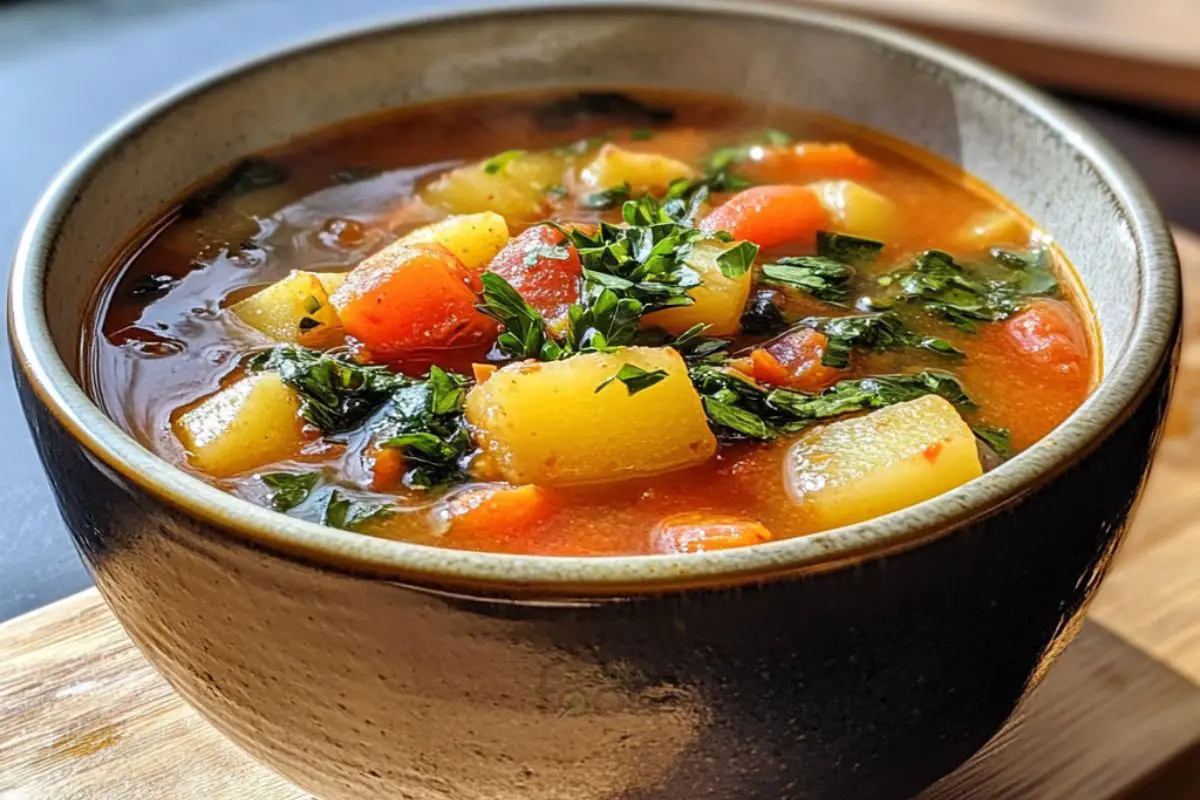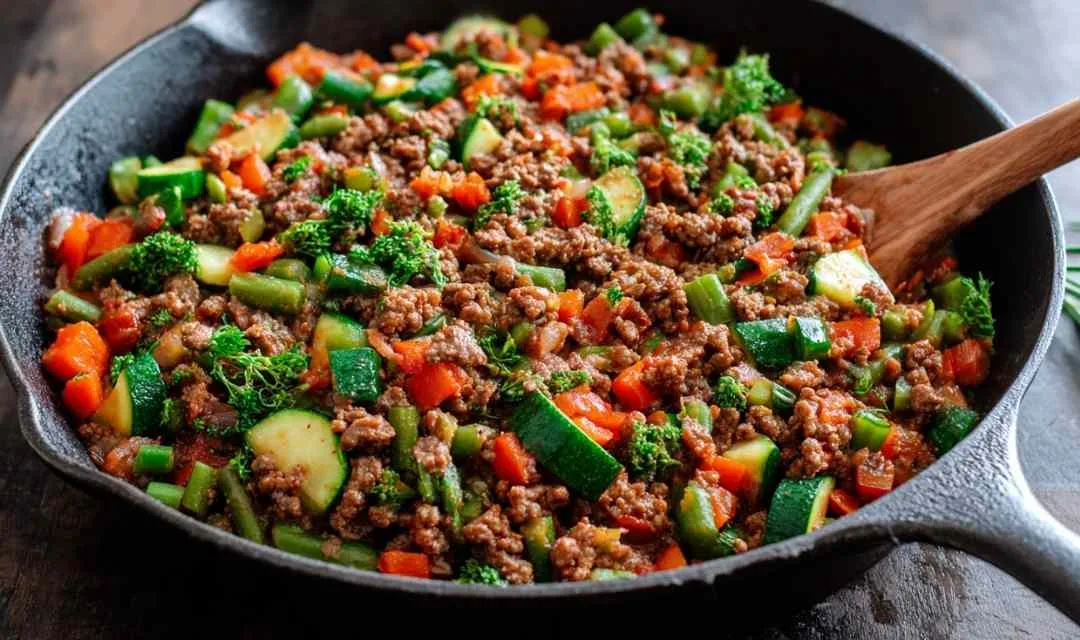The Comfort of Hearty Soups in Winter
When the cold winds blow and snowflakes dance outside, nothing warms the heart quite like a bowl of soup. Hearty soups, especially in winter, provide comfort and nourishment. They wrap you in warmth, making chilly days feel cozy. The aroma of simmering vegetables fills the air, inviting everyone to gather around the table. A steaming bowl of soup can lift spirits and bring smiles, making it a perfect dish for family gatherings or quiet nights at home.
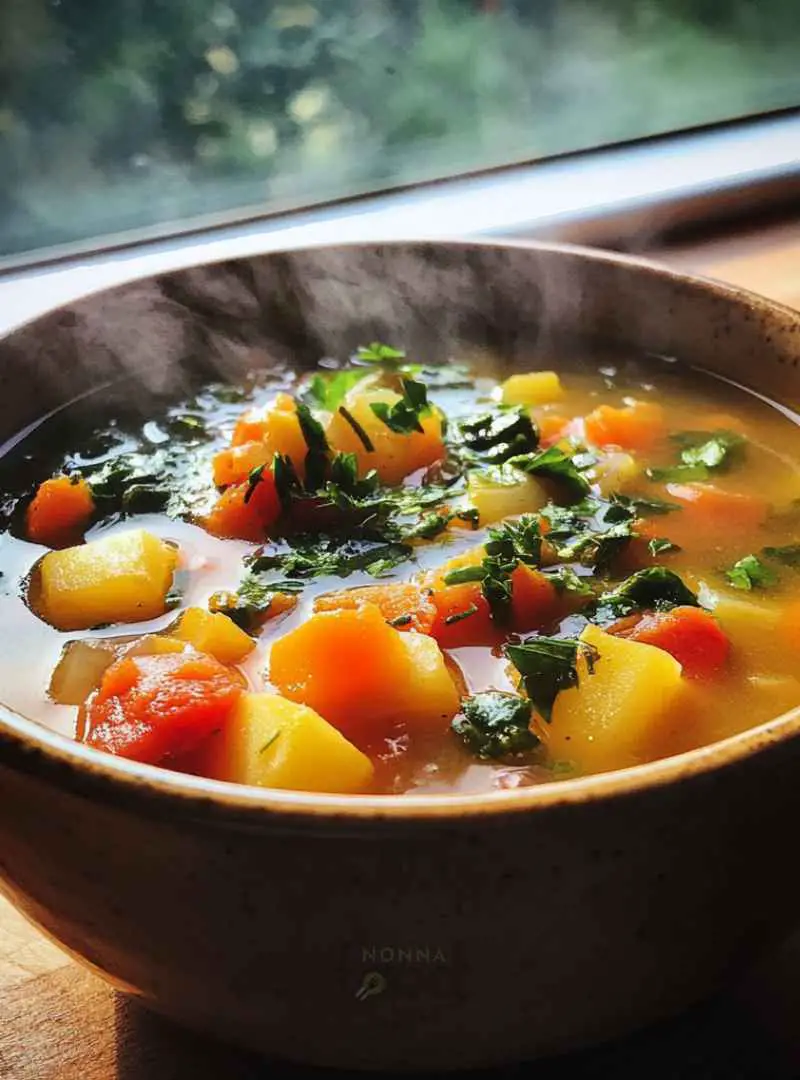
Why Choose Winter Vegetable Soup?
Winter Vegetable Soup is a fantastic choice for many reasons. First, it’s packed with nutrients. The variety of vegetables offers vitamins and minerals essential for staying healthy during the colder months. Plus, it’s easy to make! With just a few simple ingredients, you can create a delicious meal that warms you from the inside out. This soup is also versatile. You can customize it with your favorite vegetables or add proteins for a heartier meal. Whether you’re looking for a quick lunch or a comforting dinner, Winter Vegetable Soup fits the bill perfectly.
Ingredients for Winter Vegetable Soup
Essential Ingredients for a Flavorful Soup
To create a delightful Winter Vegetable Soup, you need a mix of fresh and wholesome ingredients. The base of this soup is simple yet flavorful. Start with olive oil, which adds richness. Next, include a large onion and garlic cloves for a savory foundation. Carrots and celery bring sweetness and crunch, while potatoes add heartiness. Zucchini and bell peppers contribute vibrant colors and textures. A can of diced tomatoes enhances the soup’s flavor and provides a lovely acidity. Finally, vegetable broth serves as the liquid base, making the soup warm and comforting. Don’t forget the dried thyme and oregano, which infuse the soup with aromatic goodness. Season with salt and pepper to taste, and you’re ready to cook!
Optional Add-ins for Your Winter Vegetable Soup
While the essential ingredients create a fantastic soup, you can always add your personal touch! Consider including proteins like beans or lentils for extra nutrition. These options make the soup more filling and satisfying. If you enjoy a bit of heat, toss in some red pepper flakes or diced jalapeños. For a creamy texture, you might blend a portion of the soup and stir it back in. You can also experiment with different vegetables, such as sweet potatoes, parsnips, or even kale. Each addition brings unique flavors and nutrients, allowing you to customize your Winter Vegetable Soup to your liking. The possibilities are endless, so feel free to get creative!
Step-by-Step Preparation of Winter Vegetable Soup
Step 1: Sauté the Vegetables
To kick off your Winter Vegetable Soup, start by heating 2 tablespoons of olive oil in a large pot over medium heat. Once the oil is hot, add the chopped onion. Sauté it for about 5 minutes until it turns translucent. This step is crucial as it builds the soup’s flavor base. Next, stir in the minced garlic and cook for an additional minute. The aroma of garlic will fill your kitchen, making it hard to resist the deliciousness to come!
Step 2: Add the Root Vegetables
Now it’s time to add the heartier vegetables. Toss in the diced carrots, celery, and potato. Cook these for about 5-7 minutes, stirring occasionally. You want them to soften but not lose their crunch. This mix of root vegetables adds depth and sweetness to your soup, making it even more comforting on chilly days.
Step 3: Incorporate the Remaining Ingredients
Once your root vegetables are ready, it’s time to bring everything together. Add the diced zucchini, chopped bell pepper, and the can of diced tomatoes (with juice) to the pot. Pour in 6 cups of vegetable broth, and sprinkle in the dried thyme and oregano. Season with salt and pepper to taste. Bring the mixture to a boil, and then reduce the heat. Let it simmer for about 20-25 minutes. This allows all the flavors to meld beautifully, and the vegetables will become tender and delicious.
Step 4: Finish with Greens
After the soup has simmered, it’s time to add some greens! Stir in 2 cups of fresh spinach or kale. Cook for an additional 5 minutes until the greens are wilted. This step not only adds color but also boosts the nutritional value of your Winter Vegetable Soup. The greens provide essential vitamins and minerals, making your soup even healthier!
Step 5: Serve
Finally, it’s time to enjoy your creation! Ladle the warm soup into bowls and garnish with chopped fresh parsley. This adds a pop of color and freshness. Serve your Hearty Winter Vegetable Soup hot, and watch as everyone gathers around to savor this comforting dish. It’s perfect for warming up on cold days and is sure to bring smiles to your table!
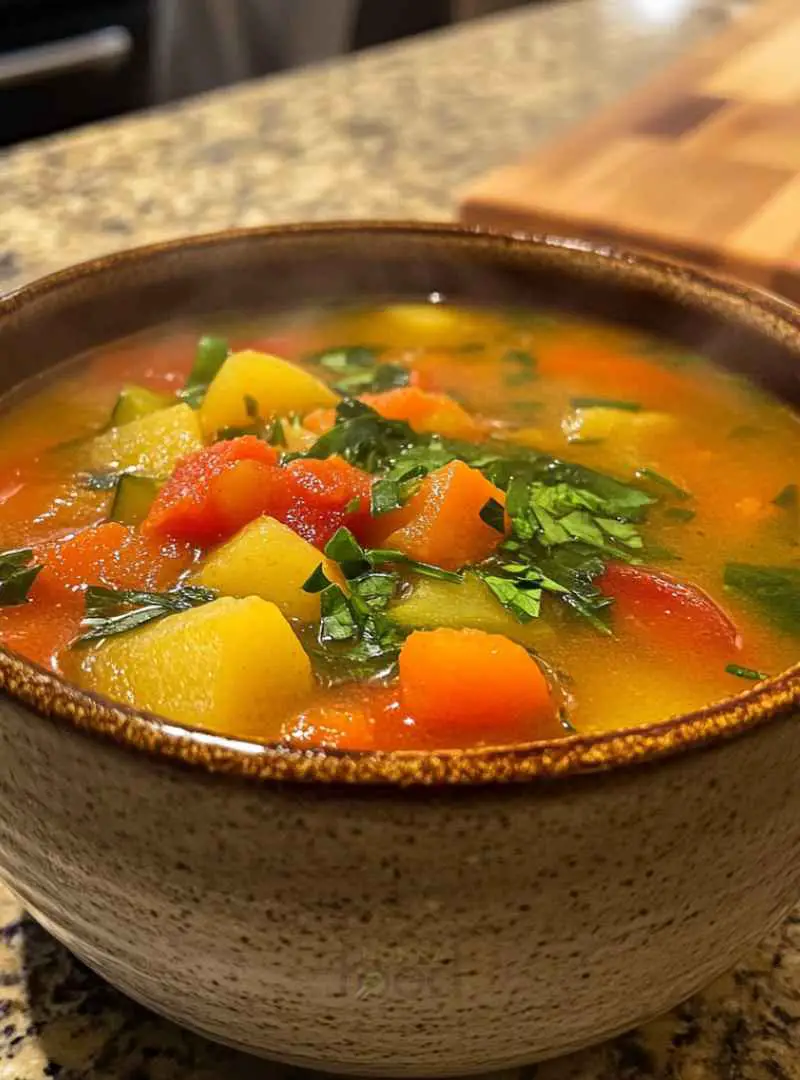
Variations of Winter Vegetable Soup
Adding Protein to Your Winter Vegetable Soup
If you want to make your Winter Vegetable Soup even heartier, consider adding protein. Beans, lentils, or chickpeas are excellent choices. They not only enhance the soup’s texture but also boost its nutritional value. For a meatier option, shredded chicken or diced turkey can be added. Simply stir in cooked protein during the last few minutes of cooking. This way, it warms through without overcooking. Adding protein makes the soup more filling, perfect for a complete meal on a chilly day!
Spicy Twist on Winter Vegetable Soup
For those who enjoy a bit of heat, a spicy twist can elevate your Winter Vegetable Soup. Start by adding red pepper flakes or diced jalapeños when you sauté the onions and garlic. This will infuse the soup with a delightful kick right from the beginning. You can also finish the soup with a splash of hot sauce or a sprinkle of cayenne pepper. Adjust the spice level to your liking, and enjoy a warming bowl that not only comforts but also excites your taste buds!
Creamy Version of Winter Vegetable Soup
If you prefer a creamy texture, transforming your Winter Vegetable Soup is easy! After the soup has simmered, take a portion of it and blend it until smooth. You can use an immersion blender directly in the pot or transfer it to a regular blender. Once blended, stir it back into the pot. For an extra creamy touch, consider adding a splash of heavy cream or coconut milk. This variation creates a rich and velvety soup that feels indulgent while still being healthy!
Cooking Note for Winter Vegetable Soup
Tips for Perfecting Your Soup
Making the perfect Winter Vegetable Soup is all about attention to detail. First, always use fresh vegetables. Fresh produce not only enhances flavor but also boosts nutrition. When chopping, try to cut your vegetables into similar sizes. This ensures even cooking and a pleasing texture. Additionally, don’t rush the sautéing process. Allow the onions and garlic to develop their flavors fully before adding other ingredients. This step is key to a rich, savory base.
Another tip is to taste as you go. Adjust the seasoning gradually. A little salt can bring out the natural sweetness of the vegetables. If you find the soup too thick, simply add more vegetable broth or water until you reach your desired consistency. Lastly, let your soup sit for a few minutes after cooking. This resting time allows the flavors to meld together beautifully, making each bowl even more delicious!
Storing and Reheating Winter Vegetable Soup
Storing your Winter Vegetable Soup is easy and convenient. Allow the soup to cool completely before transferring it to airtight containers. It can be stored in the refrigerator for up to 4 days. If you want to keep it longer, consider freezing it. Portion the soup into freezer-safe containers or bags, leaving some space for expansion. Frozen soup can last for up to 3 months.
When you’re ready to enjoy your soup again, reheating is simple. For the best results, thaw frozen soup in the refrigerator overnight. Then, reheat it on the stove over medium heat, stirring occasionally. If the soup seems too thick after reheating, add a splash of broth or water to loosen it up. You can also microwave individual portions, but be sure to stir halfway through for even heating. Enjoy your comforting bowl of Winter Vegetable Soup anytime you crave warmth!
Serving Suggestions for Winter Vegetable Soup
Best Accompaniments for Your Soup
When it comes to enjoying your Winter Vegetable Soup, the right accompaniments can elevate the experience. A warm, crusty bread is a classic choice. It’s perfect for dipping and soaking up the delicious broth. Consider serving a slice of sourdough or a baguette alongside your soup. If you prefer something lighter, a fresh garden salad can complement the soup beautifully. The crispness of the salad adds a nice contrast to the warm, hearty soup.
For a bit of indulgence, you might also serve a cheese platter. Soft cheeses like brie or goat cheese pair wonderfully with the flavors of the soup. You can even sprinkle some grated parmesan on top of your soup for an extra layer of flavor. Lastly, a glass of red wine can enhance the meal, making it feel even more special. These accompaniments not only enhance the taste but also create a delightful dining experience.
Creative Ways to Serve Winter Vegetable Soup
Serving your Winter Vegetable Soup can be a fun and creative process! Instead of traditional bowls, consider using bread bowls. Hollow out small loaves of bread and fill them with soup. This not only looks impressive but also adds a delicious twist as you can eat the bowl afterward. Another idea is to serve the soup in mason jars for a rustic touch. This is especially great for casual gatherings or picnics.
You can also create a soup bar! Set out various toppings like croutons, shredded cheese, fresh herbs, and hot sauce. Let everyone customize their bowls to their liking. This interactive approach makes the meal more engaging and fun. Lastly, don’t forget about garnishing! A sprinkle of fresh parsley or a drizzle of olive oil can make your soup look as good as it tastes. These creative serving ideas will surely impress your guests and make your Winter Vegetable Soup even more enjoyable!
Tips for Making the Best Winter Vegetable Soup
Choosing the Right Vegetables
Choosing the right vegetables is key to a delicious Winter Vegetable Soup. Start with seasonal vegetables, as they are fresher and more flavorful. Root vegetables like carrots, potatoes, and parsnips are perfect for adding heartiness. They hold up well during cooking and provide a satisfying texture. Don’t forget about leafy greens! Spinach and kale not only add color but also boost the soup’s nutrition.
When selecting vegetables, look for vibrant colors and firm textures. Avoid any that are soft or have blemishes. You can also mix and match based on your preferences. For instance, if you love sweet potatoes, feel free to swap them for regular potatoes. Experimenting with different vegetables can lead to exciting new flavors in your soup. Remember, the more variety you include, the more nutrients you’ll pack into each bowl!
Enhancing Flavor in Your Winter Vegetable Soup
To enhance the flavor of your Winter Vegetable Soup, consider a few simple tricks. First, always sauté your onions and garlic until they are fragrant. This step builds a strong flavor base. You can also add a splash of balsamic vinegar or a squeeze of lemon juice at the end. This brightens the soup and adds a lovely acidity that balances the richness of the vegetables.
Herbs and spices play a crucial role in flavor enhancement. Fresh herbs like thyme, rosemary, or basil can elevate your soup significantly. If you prefer dried herbs, add them early in the cooking process to allow their flavors to develop. Additionally, consider adding a bay leaf while the soup simmers. Just remember to remove it before serving! Lastly, don’t shy away from seasoning. A pinch of salt can bring out the natural sweetness of the vegetables, making your Winter Vegetable Soup even more delicious.
Breakdown of Time for Winter Vegetable Soup
Prep Time
Preparing your Winter Vegetable Soup is quick and easy! The prep time is about 15 minutes. During this time, you’ll chop the vegetables, mince the garlic, and gather all your ingredients. Having everything ready before you start cooking makes the process smoother. It’s a great way to ensure you enjoy the cooking experience without feeling rushed. So, take your time to chop and prepare, and soon you’ll be on your way to a delicious soup!
Cooking Time
The cooking time for your Winter Vegetable Soup is approximately 35 minutes. This includes sautéing the vegetables and allowing the soup to simmer. Sautéing takes about 10 minutes, while simmering allows the flavors to meld beautifully for about 25 minutes. This time is essential for achieving that rich, comforting taste. So, while the soup is cooking, you can relax and enjoy the delightful aroma filling your kitchen!
Total Time
In total, you’ll spend about 50 minutes from start to finish. This includes both prep and cooking time. With just under an hour, you can create a hearty and nourishing Winter Vegetable Soup that warms your soul. It’s a perfect meal for busy days when you want something comforting yet easy to make. So, gather your ingredients and get ready to enjoy a bowl of deliciousness!
Nutritional Information for Winter Vegetable Soup
Calories and Macronutrients
Understanding the nutritional content of your Winter Vegetable Soup can help you appreciate its health benefits. A typical serving of this soup, which is about 1.5 cups, contains approximately 150 calories. This makes it a light yet satisfying option for any meal. The macronutrient breakdown is quite balanced, with about 5 grams of protein, 3 grams of fat, and 30 grams of carbohydrates. The fiber content is also noteworthy, providing around 6 grams per serving. This fiber helps keep you full and supports digestive health, making your soup not just tasty but also nutritious!
Health Benefits of Winter Vegetable Soup
Winter Vegetable Soup is more than just a comforting dish; it’s packed with health benefits. The variety of vegetables used in the soup provides essential vitamins and minerals. For instance, carrots are rich in beta-carotene, which supports eye health. Spinach and kale are excellent sources of iron and calcium, promoting strong bones and healthy blood. Additionally, the soup is low in calories, making it a great option for those looking to maintain or lose weight.
Moreover, the antioxidants found in vegetables help combat inflammation and boost your immune system. This is especially important during the winter months when colds and flu are more common. The warmth of the soup also aids in digestion and can soothe a sore throat. Overall, enjoying a bowl of Winter Vegetable Soup not only warms you up but also nourishes your body, making it a perfect choice for chilly days!
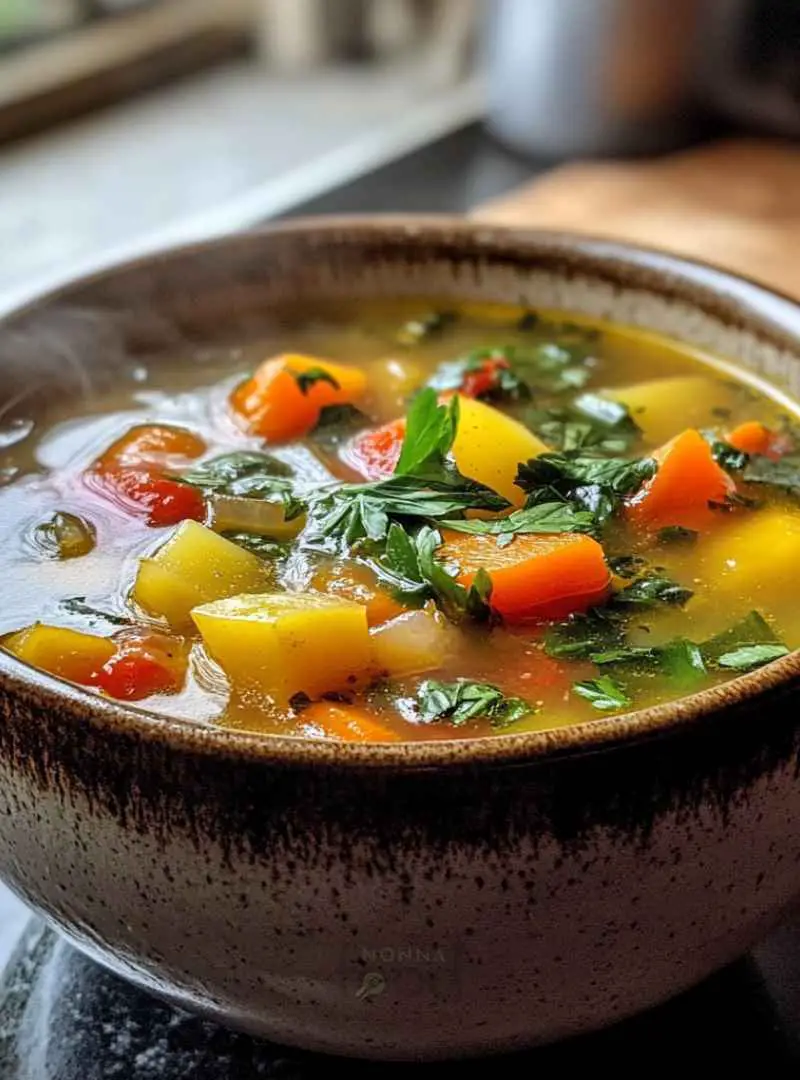
FAQs about Winter Vegetable Soup
Can I freeze Winter Vegetable Soup?
Absolutely! Freezing Winter Vegetable Soup is a great way to enjoy it later. Just let the soup cool completely before transferring it to airtight containers or freezer bags. Make sure to leave some space for expansion. When stored properly, your soup can last up to 3 months in the freezer. When you’re ready to enjoy it again, simply thaw it in the refrigerator overnight and reheat on the stove or in the microwave. This makes it a convenient meal option for busy days!
What vegetables can I add to Winter Vegetable Soup?
The beauty of Winter Vegetable Soup lies in its versatility! You can add a variety of vegetables based on your preferences. Some great options include sweet potatoes, parsnips, green beans, or even butternut squash. Feel free to experiment with seasonal vegetables to keep things fresh and exciting. Just remember to cut them into similar sizes for even cooking. The more colorful your soup, the more nutrients it will have!
How long does Winter Vegetable Soup last in the fridge?
Your Winter Vegetable Soup can last in the refrigerator for up to 4 days. To keep it fresh, store it in an airtight container. If you notice any changes in smell or appearance, it’s best to discard it. Reheating is simple; just warm it on the stove or in the microwave until heated through. Enjoying leftovers is a great way to savor the comforting flavors of your soup throughout the week!
Is Winter Vegetable Soup vegan-friendly?
Yes, Winter Vegetable Soup is naturally vegan-friendly! All the ingredients used in this soup, such as vegetables, olive oil, and vegetable broth, are plant-based. This makes it a perfect option for those following a vegan diet. You can also customize it further by adding your favorite plant-based proteins or grains. Enjoy this nourishing soup knowing it aligns with your dietary choices!
Conclusion: Enjoying Your Winter Vegetable Soup
Final Thoughts on Making Winter Vegetable Soup
As you wrap up your cooking adventure, remember that Winter Vegetable Soup is more than just a meal; it’s an experience. Each bowl is filled with warmth, flavor, and the love you put into it. The beauty of this soup lies in its simplicity and versatility. You can easily adapt it to suit your taste or dietary needs. Whether you enjoy it on a snowy day or as a comforting dinner after a long day, this soup is sure to bring joy to your table. So, gather your ingredients, follow the steps, and savor the delightful aroma as it fills your kitchen. You’ll be rewarded with a nourishing dish that warms both body and soul!
Encouragement to Experiment with Your Soup Recipe
Don’t hesitate to get creative with your Winter Vegetable Soup! The recipe serves as a fantastic base, but the real fun comes from experimenting. Try different vegetables, spices, or even add-ins like grains or proteins. Each variation can lead to exciting new flavors and textures. You might discover a combination that becomes your new favorite! Remember, cooking is all about exploration and enjoyment. So, roll up your sleeves, have fun, and make this soup your own. Your taste buds will thank you, and your loved ones will appreciate the effort you put into creating something special. Happy cooking!

Winter Vegetable Soup
Ingredients
Equipment
Method
- Add diced carrots, celery, and potatoes. Cook for 5-7 minutes, stirring occasionally until they soften but remain crunchy.
- Incorporate diced zucchini, chopped bell pepper, and diced tomatoes (with juice). Pour in vegetable broth, add thyme and oregano, and season with salt and pepper. Bring to a boil, then reduce heat and let simmer for 20-25 minutes.
- Stir in fresh spinach or kale and cook for an additional 5 minutes until wilted.
